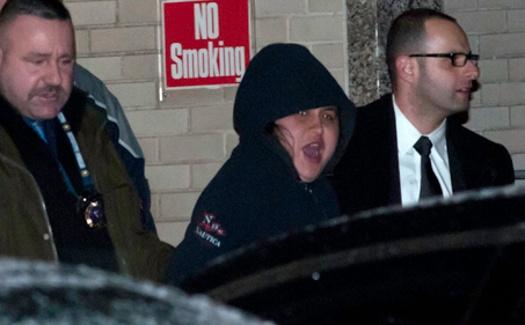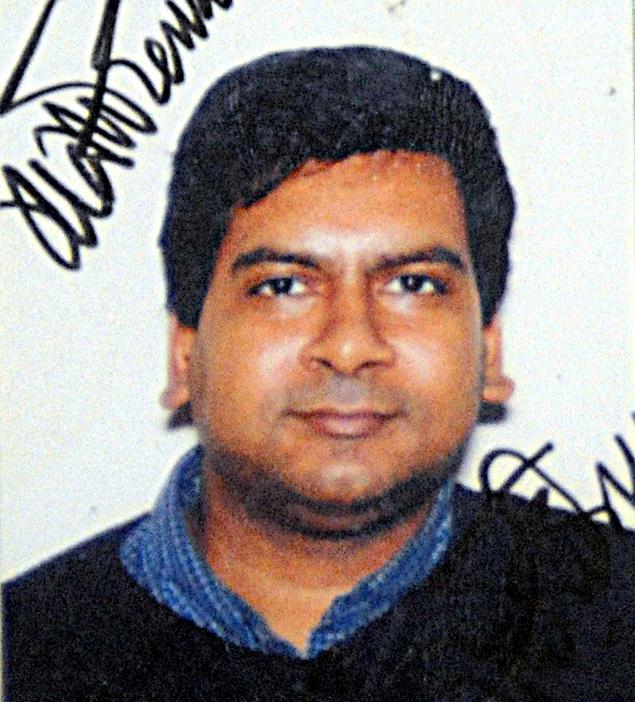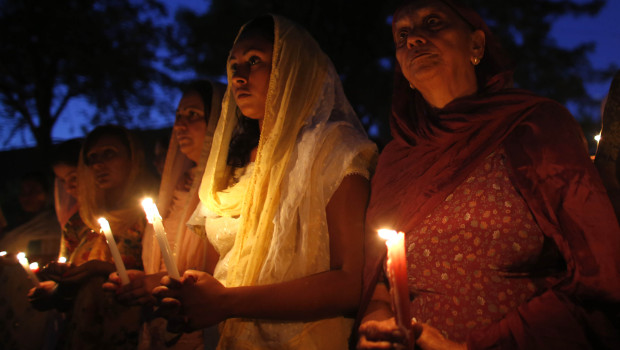
Yesterday, I noted that the killing of 46-year-old Sunando Sen by a woman who pushed him into the path of an oncoming subway train meant that both of the recent high-profile subway victims have been middle-aged Asian American men. Last month, Korean-American Ki-Suck Han was (allegedly) killed by Naeem Davis following a verbal dispute, while Sunando Sen immigrated from India twenty years ago.

Turns out that while the motives behind Han’s death remain murky, Sen’s murder was almost certainly racially motivated.
Yesterday, 31-year-old Erika Menendez was arrested in relation to Sen’s death, and early news indicated that she had implicated herself to police officials while in custody. The New York Times reports on statements made by Queens district attorney Richard A. Brown that speak directly to Menendez’s motives in the killing:
The woman, Erika Menendez, selected her victim because she believed him to be a Muslim or a Hindu, Richard A. Brown, the Queens district attorney, said.
“The defendant is accused of committing what is every subway commuter’s nightmare: Being suddenly and senselessly pushed into the path of an oncoming train,” Mr. Brown said in an interview.
In a statement, Mr. Brown quoted Ms. Menendez, “in sum and substance,” as having told the police: “I pushed a Muslim off the train tracks because I hate Hindus and Muslims ever since 2001 when they put down the twin towers I’ve been beating them up.” Ms. Menendez conflated the Muslim and Hindu faiths in her comments to the police and in her target for attack, officials said.
The victim, Sunando Sen, was born in India and, according to a roommate, was raised Hindu.
Mr. Sen “was allegedly shoved from behind and had no chance to defend himself,” Mr. Brown said. “Beyond that, the hateful remarks allegedly made by the defendant and which precipitated the defendant’s actions should never be tolerated by a civilized society.”
Menendez is being charged with second-degree murder and a hate crime. She apparently saw no difference between Hindus and Muslims and Sikhs — to her, brown is brown, foreign is foreign, a turban is a turban, and all are terrorists.
As 2012 draws to a close, I can’t help but be reminded that this is the year that saw a deadly shooting at an Oak Creek Sikh temple that ultimately killed seven people; a shooting that occurred at least in part because Sikhs are often mistaken for Muslims. I can’t help but remember that one of the first post-9/11 hate crimes involved the shootind death of a Sikh-American man mistaken for Muslim. As 2012 draws to a close, I can’t help but feel a second wound is being inflicted upon the victims at Oak Creek because the tragedy has been scarcely mentioned in the flurry of year-end wrap-up specials in mainstream news.

And, as 2012 draws to a close, the FBI reports that anti-Muslim hate crimes remain high, prompted at least in part by the last few years’ rise in Islamophobic rhetoric in Rightwing politics. Reports MintPress News:
Recently released FBI reports on hate crime statistics found that for the second year in a row, hate crimesagainst Muslims, including vandalism, intimidation, assault, rape, murder, etc., remain at relatively high levels. In 2011, the FBI reported 157 anti-Muslim hate crimes, an insignificant drop from the some 160 hate crimes reported in 2010.
In 2010 the FBI reported a dramatic 50 percent increase in hate crimes against Muslims for the first time since levels dropped since 2001, after a surge in the amount of anti-Muslim propaganda by the media. The FBI maintains that the continuance of a high level of hate crimes against Muslims in 2011 is tied to a continuance of Islam-bashing propaganda, including battles over the construction of new mosques and the alleged plan that Muslims were to impose religious Sharia law on the U.S.
No one — not Muslims, nor Hindus, nor Sikhs — deserves to be the victim of a racially-motivated hate crime.
But, anti-Muslim hatred is something that impacts all people, and specifically is claiming Asian American, as well as Muslim, lives. Our community remains far too silent on the racism faced by people outside of our own community, and we often fail to take up the causes of those we don’t immediately identify with.
It’s nearly 2013, people. And, yet we still live in a world where people kill people because they’re brown.
